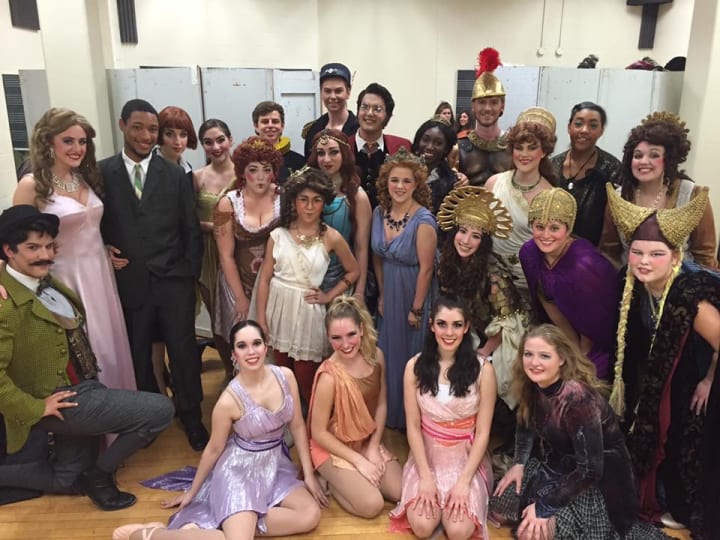Dramatic Origins
How the Can-Can came to be the iconic tune we all know and love.

Everyone’s heard of the Can-Can. We all know it as the upbeat tune that a group of women in long skirts dance to and do lots of high kicks. To us, it’s fun, sexy, and even comical. But back when it first rose to fame, it was called salacious, scandalous, and raunchy.
We may not think so now, but the Can-Can was considered the naughtiest and most outrageous dance of its time. It shook the strict Victorian traditions of the 19th century, and it ushered in a new era of French culture. Through its controversy, it gained its place in history as the musical icon we all know today.
But where did this iconic tune come from?
Believe it or not, it actually started out in opera!
The tune, originally named the “Galop Infernal”, is from Jacques Offenbach’s opera Orpheus in the Underworld (Orphée aux enfers).
Orpheus in the Underworld is basically a spoof of the Orpheus myth in Greek mythology (you can find the full synopsis of the opera here).
For those that aren’t familiar with the original Greek myth…
Long story short: Orpheus is a demigod, son of Apollo, with god-like musical abilities. The story begins with him marrying the love of his life, Eurydice. But on their wedding day, Eurydice goes out into the garden, where she gets bitten by a snake and dies. From there, Orpheus ventures into the Underworld to get her back, using his musical abilities to pass through each obstacle he encounters. Eventually, he reaches Hades and asks for Eurydice back. Hades agrees, but tells Orpheus that he has to make the entire journey back to Earth with Eurydice walking behind him, and he can’t turn around to look at her or he’ll lose her. Orpheus agrees, and sets out on the journey back. But just as he’s about to make it back to Earth, he looks behind him and loses Eurydice forever.
Dramatic and sad as hell, typical of a Greek tragedy. Meanwhile, the opera is pretty much the opposite. It’s a true, over the top French comedy (or “opéra bouffon”).
Orpheus in the Underworld was Offenbach’s first full-length opera. Written in 1858, it was originally a 2 act opera, but Offenbach later expanded it into a 4 act opera packed with several dance numbers. In both versions, the Galop Infernal comes near the end of the opera, when all the gods break out into a big dance number while they’re drunkenly partying away in the Underworld.
Near the end of the 19th century, around 15 years after Offenbach’s death, the tune of the Galop Infernal picked up notoriety after the Moulin Rouge and the Folies Bergère adopted it as part of their Can-Can dance. From there, it became the iconic piece of music it is today.
I find this an exciting part of history. But the most exciting part for me is that I actually learned all this when I performed Orpheus in the Underworld during my senior year of college.
Finding out that this opera is where the Can-Can tune came from instantly got me and all my cast mates stoked to perform it. We had the best time doing it, and we were thrilled that the audience was just as excited about it as we were!
You can watch our full performance here!
(For the record, the dance didn’t come from the opera. We just included it because it’s so inseparable from the tune.)
To this day Orpheus in the Underworld still stands out as one of the most fun shows I’ve ever performed in, and one of my favorite operas overall. And it was great to be able to learn this fun bit of history through being able to actually perform it!

Thanks so much for reading! If you enjoyed this article, I’d appreciate it so much if you shared it and left a like and a tip!
About the Creator
Jaye Ruggiero-Cash
Writer | Poet | Musician | Actor | Model
Lover of all things arts & humanities
Gluten-Free Foodie
"When we are shaped by the sounds and shades of truth, the colors never fade."
Follow Me!
Reader insights
Outstanding
Excellent work. Looking forward to reading more!
Top insight
Expert insights and opinions
Arguments were carefully researched and presented






Comments (1)
Thank you for sharing this, while I know the origins, many don't. Great pictures too